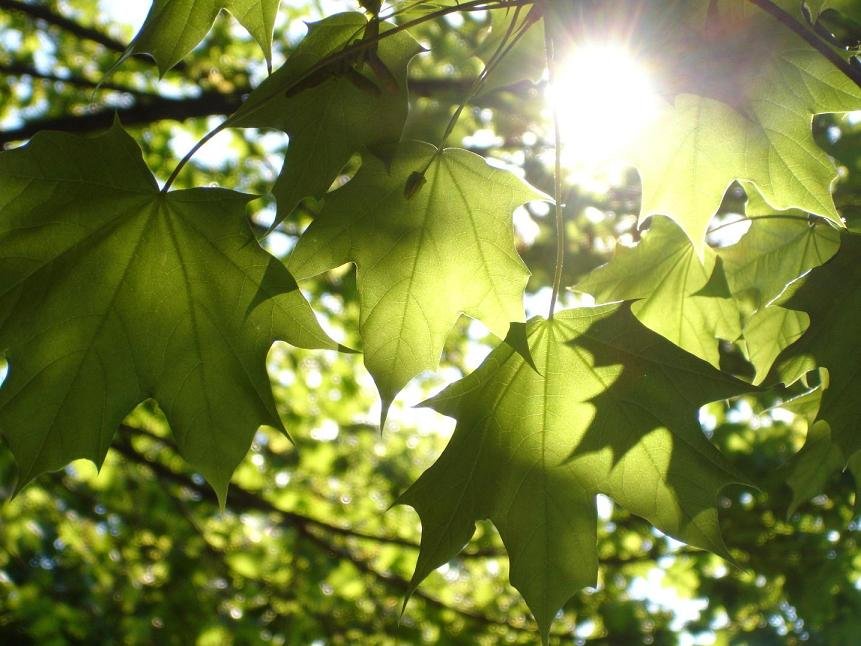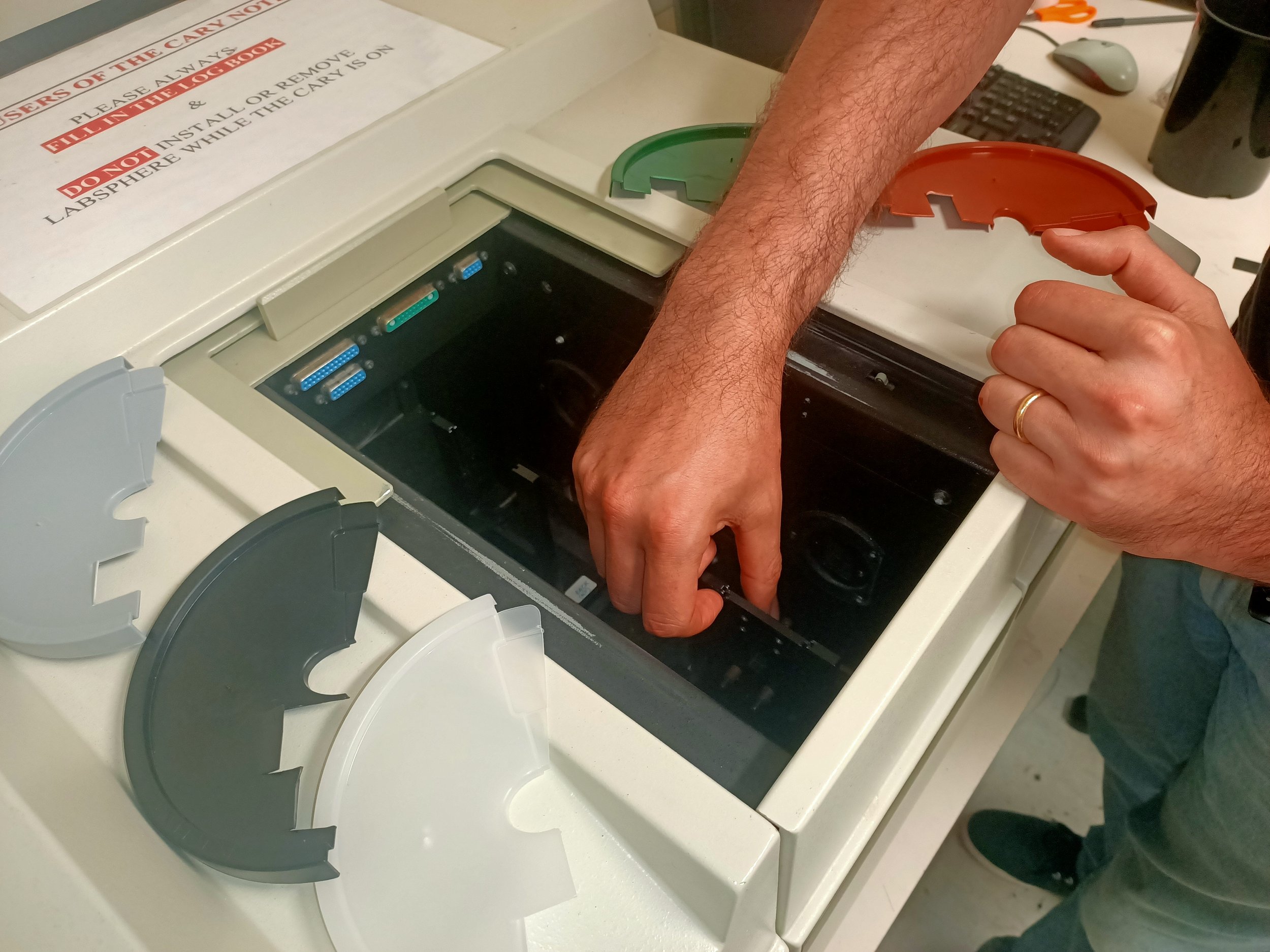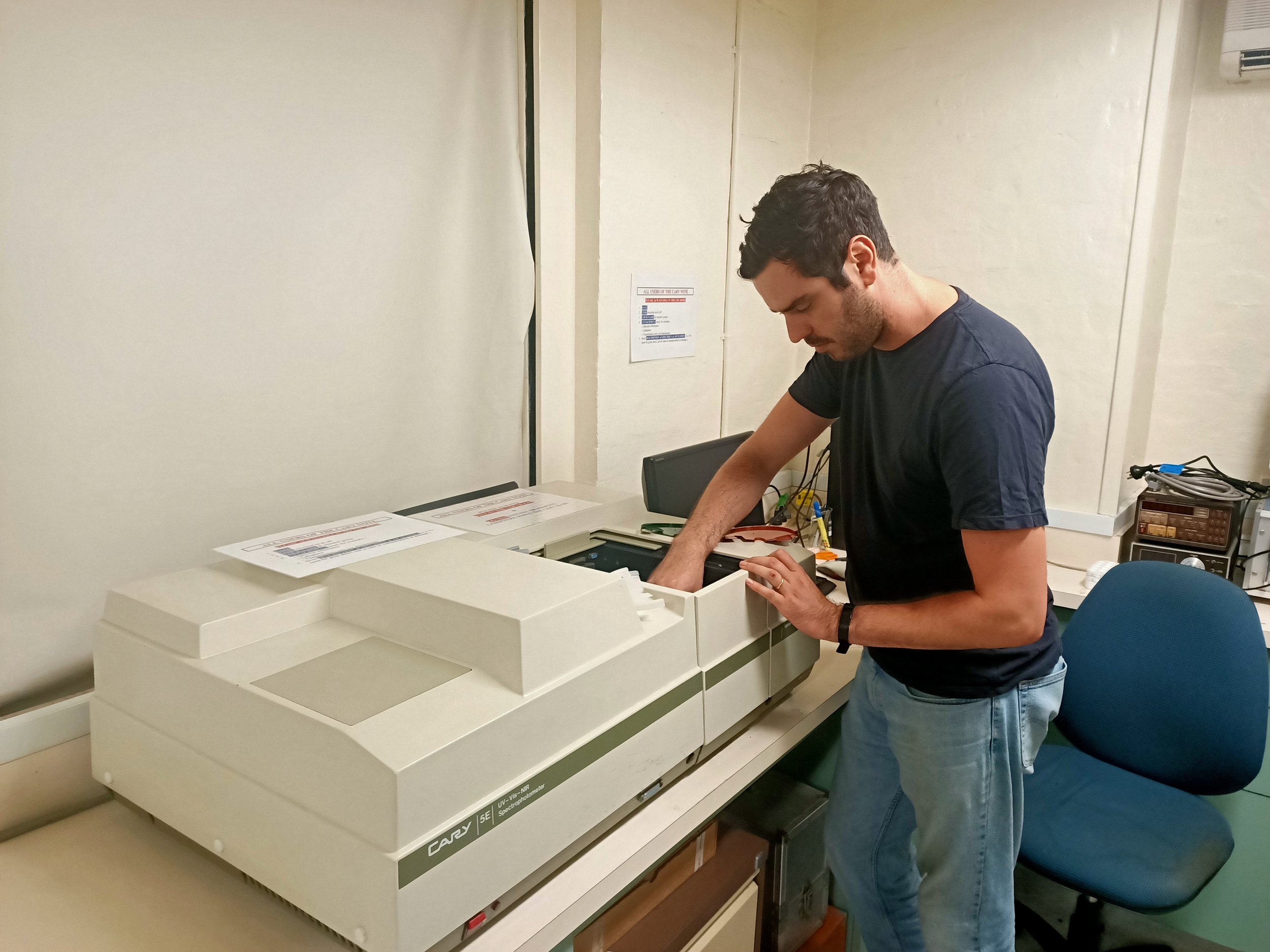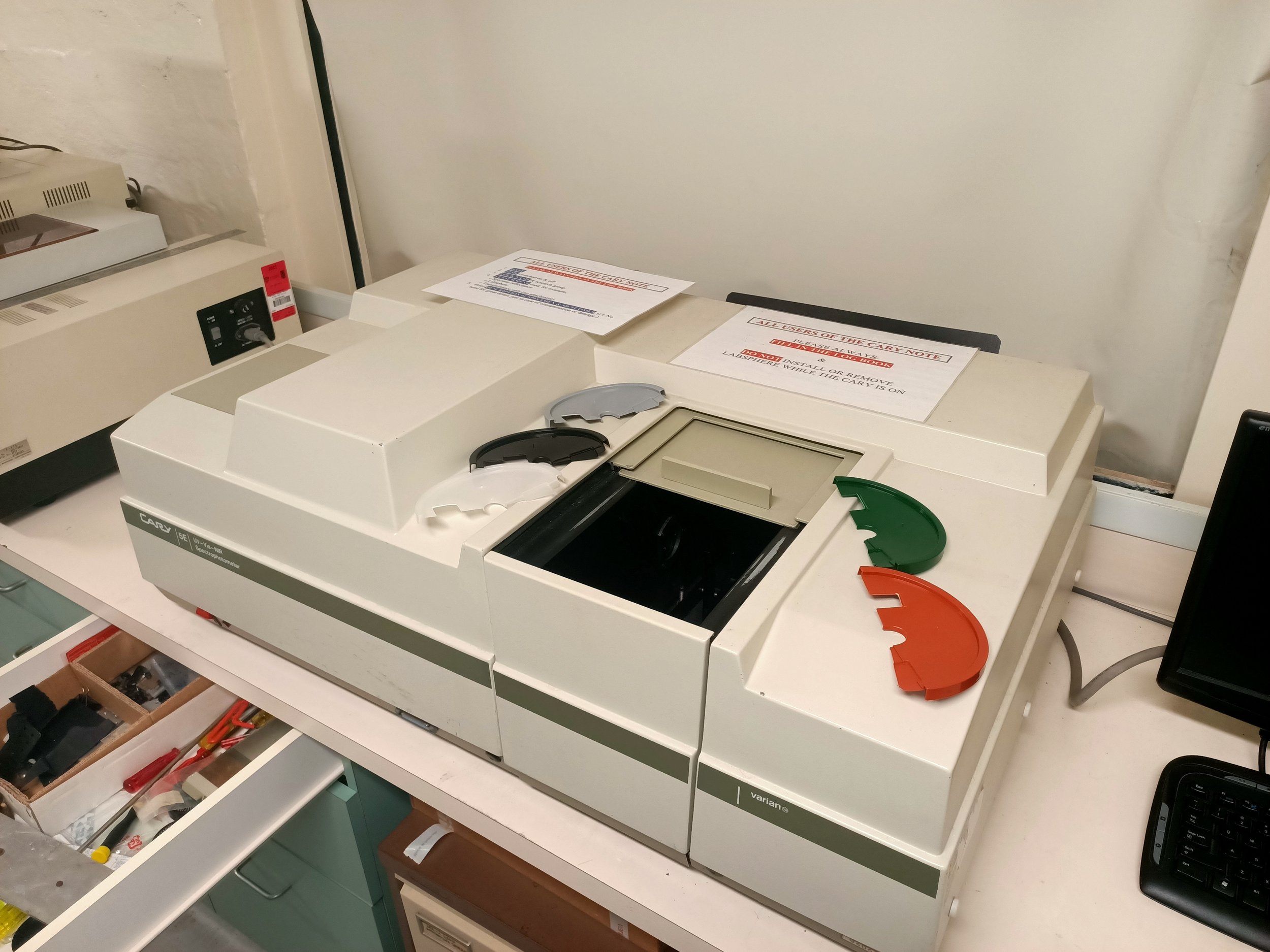Complete Light Suppression
The Pot Head colour range has been put to the test to assure that light is completely blocked from reaching weeds

Light transmittance trial
Purpose
To measure light transmittance through a PotHeadᵀᴹ across 5 plastic colour variations. Weeds can grow rapidly with 20% or more available light, and survive with just 10% or more, especially in the blue and red wavelengths. This trial ensures that our entire range of PotHeadsᵀᴹ will suppress enough light to the growing media to kill weeds.
Explanation (Detail)
This data compares how much light was transmitted through different plastic colours for a range of wavelengths. The wavelengths went from 800 nm (slightly infrared) to 200 nm (UV), covering the important parts of the electromagnetic spectrum used in photosynthesis. How well light transmits through different plastic colours may change with the light’s wavelength. Each plastic sample was mounted into a metal holding device, blocking a small hole that the light was shone through. The percentage transmittance of light, or how much light got through the sample and the device holding the sample, was then measured. These measurements were compared against the metal holding device with both no sample (the 100 % baseline measurement, showing the maximum possible transmittance) and completely blocked by metal (the 0% baseline, showing the minimum possible transmittance).
Photosynthesis in plants
Plants primarily use the Blue (around 450nm) and red (around 650nm) wavelengths to photosynthesise. The colours between these wavelengths are mostly reflected. Plant leaves appear green because this is strongly reflected and thereby picked up by the human eye.
Equipment used
P140 PotHeadsᵀᴹ (1mm thick plastic in black, grey, green, ceramic, and white)
Cary 5E Spectrophotometer
Image taken from: http://hyperphysics.phy-astr.gsu.edu/hbase/Biology/ligabs.html
Light transmittance relative to baseline
This is each colours performance as a percentage of the 100 % transmittance data, showing how much light can pass through the plastic material in nursery conditions.
The percentage light transmittance relative to the 100 % baseline against the wavelength of light. The wavelengths corresponding to Ultra Violet, visible colours, and Infra-red light are shown with arrows. The black, green, and grey datasets are difficult to distinguish since they all overlap with mostly 0% transmittance.
Conclusion
Black, green, grey, and ceramic colours all block light extremely well, and can be used for complete weed control. White is somewhat ineffective as the transmittance may be enough for weeds to survive. Later field testing confirmed that some moss and weed growth occurs beneath white covers. The human eye can detect even the tiny amount of transmittance through the ceramic and grey colours, but this light is well below what is required for a weed to photosynthesise, and weed suppression has been confirmed in later field trials.









